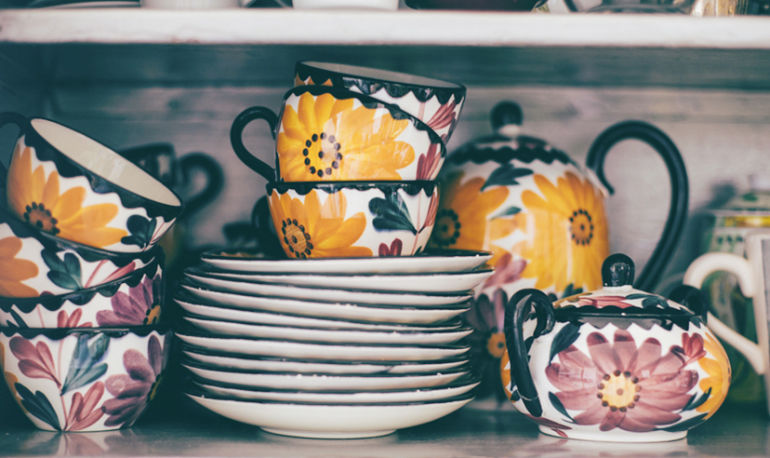
But being environmentally conscious doesn’t have to be a full-time job. Yes, there are a million and one ways we can improve our consumption choices. But a million and one is far too many for the average consumer to tackle.
Thankfully, there are four simple switches that every family can (and should!) make to ensure that they aren’t introducing toxic products into their household or harming the environment with their everyday routine.
1. Green your laundry routine.
Conventional laundry products often contain toxic chemicals that can lead to everything from mild skin irritations to more severe ailments. Worse still, manufacturers are not required to disclose their ingredient lists on the packaging, so even if you know what to avoid, you may have a hard time doing so.
The Simple Switch
Look for laundry products and brands that disclose 100 percent of the ingredients in their products—and make sure you know what these ingredients are. Avoid labels with mysterious words like dyes, fragrances,and fabric brighteners. Truly nontoxic options use ingredients that are familiar to everyone. And don’t be fooled by the word natural on a label, which can mean basically anything under the law.
One great shortcut is to check the EWG database for an A rating. Or, look for a valid third-party product certification such as a Whole Foods Eco-Scale rating. This doesn’t need to be a big project—just find one nontoxic brand you trust, and stick with it. Meliora K and Molly Suds are two that my company, Ecocentric Mom, really loves. Complete the greening of your laundry routine by swapping dryer sheets for wool dryer balls.
2. Give your hand soap a makeover.
Few personal care products are used as frequently by as many members of the family as hand soap. The average person washes his or her hands about nine times per day—often with antibacterial soap. Antibacterial soaps are potentially harmful to you and the earth because they contain a chemical called triclosan, which can reduce our body's resistance to antibiotics and harm marine life.
Hand sanitizers also pose a health issue, as soap-and-water replacements are often alcohol-based and contain a nasty chemical called 1,4-Dioxane—a probable carcinogen. Note that this ingredient won't be listed on a label because it is a by-product of the production process rather than an input.
The Simple Switch
Return to the days of scrubbing with simple soap and water. When choosing a soap, avoid anything that contains triclosan, ends in paraben, or contains the eth- prefix. We recommend looking into Kosmatology orClean Well Company. Just as with your laundry routine, once you have identified a soap brand you are comfortable with, stick with it. This small investment of your time will have a big health impact on your family—nine times per day!
3. Go fragrance-free.
Eliminating products that contain fragrances might just be the one change that gives you the biggest bang for your environmental buck. And this doesn’t mean you have to give up yummy-smelling soaps and lotions—fragrance-free is not the same thing as unscented.
Fragrance is a catchall term that manufacturers use to describe anything that changes the odor of a product. Many in-the-know consumers have dubbed them “fakegrances” because the list of a fragrance's inputs can be longer than a product's entire ingredient list. Problems associated with these fragrances range from skin irritation to weight gain, and many of the chemicals used to create a fragrance haven’t even been studied, let alone approved for use by consumers.
The Simple Switch
Look for the words fragrance-free on every product you buy, and opt for products scented with essential oils if smell is important to you.
4. Ditch the kitchen plastics.
Plastic likely dominates your kitchen, especially if you live in a household with young children. In recent years, the industry has come to recognize that certain plastics are worse than others and has made strides in eliminating the worst offenders. But in many cases, even products labeled “BPA-free” contain replacement chemicals that can be equally damaging. Case in point: The CDC found that 95 percent of Americans over age 6 have harmful phthalates in their urine and bloodstream.
The Simple Switch
Start by replacing plastic wrap and disposable baggies with cloth or fabric and storing food in glass containers rather than plastic ones. Stop buying water and other beverages packaged in plastic, and invest instead in a stainless-steel bottle for each member of the family to keep on hand. At the grocery store, bring your own produce bags and look out for the bulk bins. It's important to start somewhere and work on your quest toward a more sustainable home over time.
The key to going green is to view your choices as an evolution rather than a transformation. By making these small changes to your daily habits and buying choices, you can go a long way toward improving the health and well-being of your family and you.

No comments:
Post a Comment